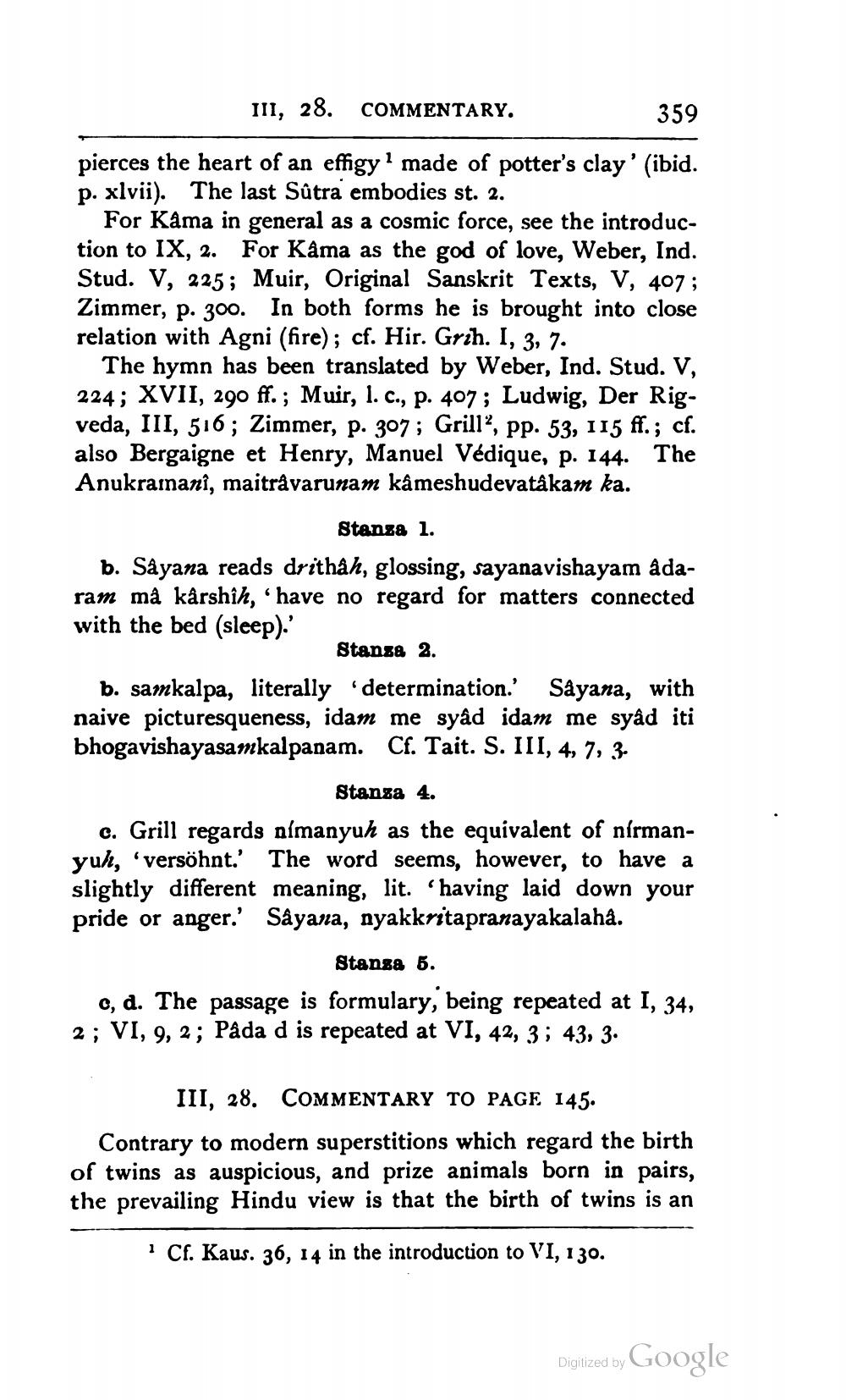________________
III, 28. COMMENTARY.
359
pierces the heart of an effigy' made of potter's clay' (ibid. p. xlvii). The last Sútra embodies st. 2.
For Kama in general as a cosmic force, see the introduction to IX, 2. For Káma as the god of love, Weber, Ind. Stud. V, 225; Muir, Original Sanskrit Texts, V, 407 ; Zimmer, p. 300. In both forms he is brought into close relation with Agni (fire); cf. Hir. Grih. I, 3, 7.
The hymn has been translated by Weber, Ind. Stud. V, 224; XVII, 290 ff. ; Muir, 1. c., p. 407; Ludwig, Der Rigveda, III, 516 ; Zimmer, p. 307; Grill?, pp. 53, 115 ff.; cf. also Bergaigne et Henry, Manuel Védique, p. 144. The Anukrainani, maitråvarunam kâmeshudevatåkam ka.
Stanza 1. b. Såyana reads drithåh, glossing, sayanavishayam adaram må kärshih, ‘have no regard for matters connected with the bed (sleep).'
Stansa 2. b. samkalpa, literally determination. Såyana, with naive picturesqueness, idam me syâd idam me syâd iti bhogavishayasamkalpanam. Cf. Tait. S. III, 4, 7, 3.
Stanza 4. c. Grill regards almanyuh as the equivalent of nirmanyuh, 'versöhnt.' The word seems, however, to have a slightly different meaning, lit. 'having laid down your pride or anger.' Sayana, nyakkritapranayakalahå.
Stanga 5.
0, d. The passage is formulary, being repeated at I, 34, 2 ; VI, 9, 2; Pada d is repeated at VI, 42, 3; 43, 3.
III, 28. COMMENTARY TO PAGE 145.
Contrary to modern superstitions which regard the birth of twins as auspicious, and prize animals born in pairs, the prevailing Hindu view is that the birth of twins is an
Cf. Kaus. 36, 14 in the introduction to VI, 130.
Digized by Google
Digitized by




